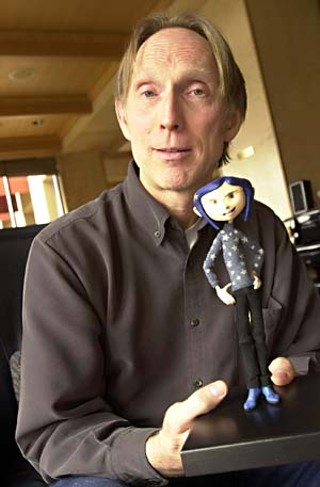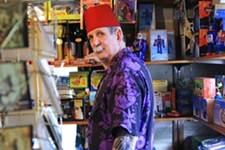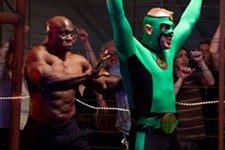The Slow Magic of Stop-Motion
Henry Selick on adapting Neil Gaiman's 'Coraline'
By Marc Savlov, Fri., Feb. 6, 2009

Tim Burton's name might be the one that generally precedes the four most beloved words in all of Nineties cinema – The Nightmare Before Christmas – but it was animator Henry Selick who did the infinitely labor-intensive, frame-by-frame stop-motion work that made Jack Skellington sing and dance and live.
The Chronicle recently spoke with Selick about his new adaptation of Newberry Award-winning author Neil Gaiman's Coraline, a modern day take on the classic fairy-tale tropes.
Austin Chronicle: What was the first animated film you saw that really evoked that "gosh wow!" sense of wonder?
Henry Selick: It would have to be Ray Harryhausen's The 7th Voyage of Sinbad. My mother took me to that when I was about 4 years old, and the cyclops in particular? I knew that thing was real. I never imagined it was only 12 inches tall, and it's stayed with me my whole life. I had nightmares about it. But I wanted to know more. Something about Harryhausen's creatures, and his monsters particularly, is that you like them. They're human; they're charming.
He was creating these creatures and animating them on very small budgets and on very tight deadlines, and so he didn't have time to make his animations more smooth. They're a little rougher, a little cruder, but they're also more human as a result.
AC: How did you first come across Coraline?
HS: I was introduced to Neil through his agent before the book was even finished. ... I loved it immediately. It's Alice in Wonderland meets Hansel and Gretel, and it felt, to me, more like the earliest Disney films that had the darkest action, films like Snow White and Pinocchio and even Bambi. It's a modern fairy tale, but it's not trying to modernize fairy tales; it's still getting back to our ancestors warning their kids not to go near the cave because the saber-toothed tiger will kill you and eat you.
AC: Coraline the movie is considerably different from Coraline the book. How did you go about adapting the project for the screen?
HS: With great difficulty. ... It wasn't that I lacked faith in my writing; it was that I was fooled a bit and thought that Neil's book was practically a screenplay already and we would be able to shoot it virtually as it was. That turned out not to be the case. I was collaborating too much with Neil on the first script. Neil is great, and he has an opinion, and he's smart, but at the end of the day, the script sucked. ... The only way I could do it was to tell Neil: "I'm going away. I'm gonna go do what I have to do, and I hope I come back with something you like, but I can't even begin to predict what's going to happen." So that's what I did, and it took over a year.
AC: What was the first major change you initiated?
HS: I relocated the story to the U.S. from the UK. I set it in Ashland, Oregon, because they have a Shakespeare festival there which made sense for the two characters who are retired actors. I also felt that Coraline needed someone to go up against, someone that was her own size, and that's how the character of Wybie came about. It took a long time to grow him into a flesh-and-blood part of the story and not just a device.









